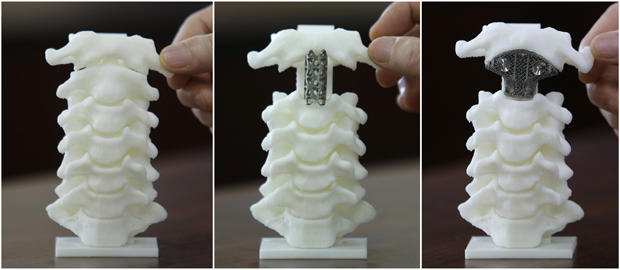With the wide variety of advancements being made in the field of modern technology, just about all facets of life are affected. From casual entertainment to different applications in business and commerce, technological developments have allowed us to enjoy various different services with greater ease and convenience. Among the latest advancement are printers that are capable of reproducing three dimensional objects for use in numerous fields. This has allowed for many breakthroughs to occur in the fields of medicine and mass reproduction, especially considered the materials with which these printers function. Recent developments have allowed for titanium to be utilized as a construction material in the 3D printing process.
3D printing titanium is also known as direct metal laser sintering, and it is an additive metal fabrication process that was developed in Germany. This process builds on the basic principles of 3D printing through the application of metallic materials for direct utility in just about any field that would need the uses of such immediately developed technology. So far, the technology has been utilized to create articles of titanium jewelry, as well as mechanical parts for bicycles and other transportation equipment. Currently, the most commonly utilized alloys in the creation process include several different types of stainless steel, as well as cobalt chromium and titanium. However, because of the immediate application of the printing process, just about any type of alloy can be theoretically utilized once it has been developed and validated.
The creation process makes use of a 3D computer model that is uploaded to the printing machine’s software. Usually a technician will have to work with the model on the computer first in order to properly arrange its geometry so that it can be constructed and supported physically as it should be. After the file itself has been finalized and all of the necessary changes have been done to the final draft, the structure in the file is divided into separate layers that are then downloaded to the machine that performs the actual construction operation. This machine is known as the DMLS machine, and it uses a powerful optic laser to perform the construction. The laser fires inside of a special building chamber, and in this chamber, a special platform dispenses the building material over a recoating blade, ensuring that the layer is materialized before the blade moves onward to the next layer. This technology fuses the titanium powder into a solid form through the use of local melting by the focus of the laser beam. Layer by layer, the machine builds the object, usually at twenty micrometers of material utilized per layer. This process can easily allow for very complicated geometric figures to be created from the image. The machine handles all of the work after the technician designs the image, and the process is fully automated, taking just a few hours without any other tooling. The DMLS process is very accurate and can result in detailed objects that possess excellent surface quality and durable properties.
There are numerous benefits that come with utilizing the DMLS over other manufacturing techniques. The most obvious of which is how easily and quickly the object can be produced without any special tooling requirements. Because of the nature of the machine, DMLS process can allow for easier testing procedures on prototypes of machine parts. Titanium is just one of the many materials that can be utilized for various production components. Additionally, DMLS can provide more versatile benefits over traditional production methods. Because of how easily the layers can be arranged and designed, complex internal features can be added to objects that would not have ordinarily been able to contain them. Complicated geometric assemblies can be simplified to a few easy to manufacture parts with the utility of 3D printing titanium. Currently, the technology is being used to manufacture parts that can be directly integrated into several industries, including medical, dental, and aerospace.
Any manufacturer that will need to utilize complex parts ranging from small to medium size will benefit from the utility of 3D printing titanium. It can be an especially cost and time effective technology for testing materials, reducing the strain on resources while making sure that the appropriate objects are constructed into the size and shape as desired. Though the technology can be very easily utilized by professional technicians, it is still not without its flaws. Currently, aspects such as size, surface finish, and feature details, are difficult to work with as the printing technology is not yet advanced enough to effectively smooth over these features. Printing through errors in the Z axis may also factor into problems that may arise from the use of this technology. As such, it is crucial for professional to plan ahead before building, and because most of the features are built in the x and y axis during the laying down process of the material, the features can usually be managed effectively. After the construction of certain materials, their surfaces may need to be polished down in order to achieve smoother or even mirror like finishes. Numerous additional considerations will need to be made in order to effectively utilize this manufacturing process in production tooling. The material density should always be taken into consideration, especially in injection molding inserts, where any surface imperfections will often cause problems in the actual products that are made from the molds. Temperatures and surface textures may also cause problems, and these aspects should be taken into consideration before finalizing any products. The production time may be slower when post processing is done, but it may be necessary in order to increase the scale of accuracy. Another problem may occur during the conversion process for more rapid prototyping machines, as the initial file format will need to be properly converted to work with the machine’s specifications. Despite these drawbacks, however, 3D printing titanium has allowed for numerous different industries to benefit from more accurate and more cost effective parts and goods. As further developments are made in this field, more alloy and size options will allow for numerous other different uses of the technology.













